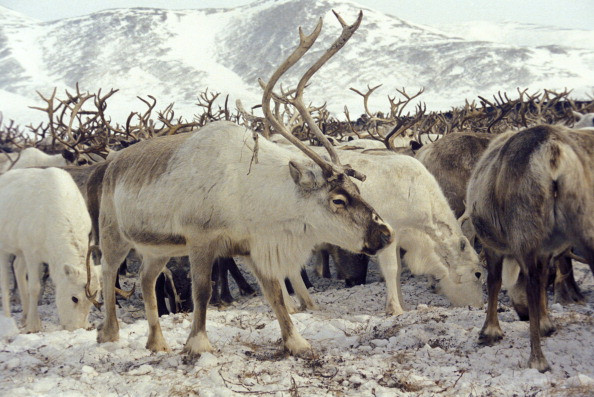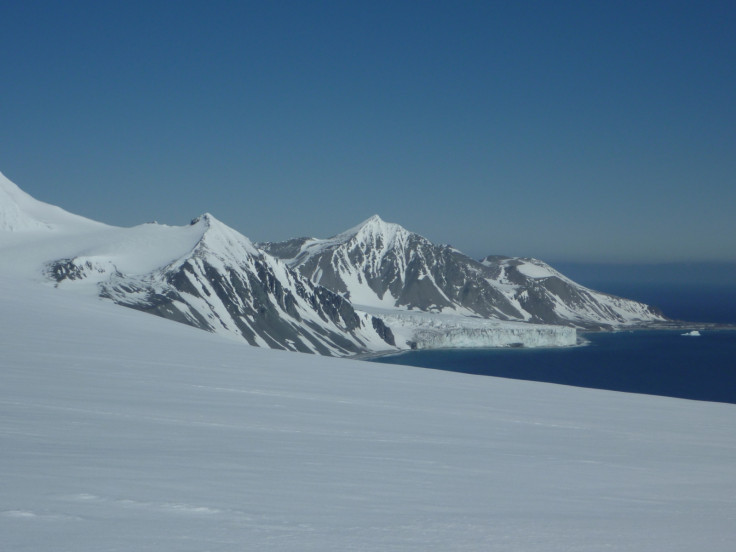How deadly viruses frozen in time could threaten humanity when Siberian permafrost melts
A study warns that the risk of becoming infected with a pathogen trapped in ancient permafrost is real, but extremely low

Miners working in remote Siberia have been exposed to a deadly pathogen after excavating tons of permafrost - in which the infectious agent remained frozen in ice for thousands of years.
After a couple of days, some of the men report symptoms, including high fever, headaches and intense fatigue, but the doctors at the site are unable to formulate a diagnosis. Quickly, the mysterious disease spreads around the camp and the miners are transported to the nearest city - a risky move as it provides an opportunity for the disease to spread more widely in dense urban areas.
Fortunately, this is a fictional scenario, and the chances of it happening any time soon are low, except perhaps on the big screen, in a low-budget sci-fi movie.
But some scientists believe it is not entirely unrealistic either.
In recent years, a growing number of scientific publications have shown that infectious agents can persist in permafrost for a very long time.
In 2016, an anthrax epidemic devastated reindeer in Russia and killed a number of people along the way. Because the epidemic occurred in a mostly deserted area, it was quickly contained.
The bacterium was a strain from 1914 - the animals were exposed when the permafrost thawed in the summer, at a greater rate than previous years.
Scientists think there's a possibility that even more ancient and deadly viruses, with the potential to infect humans, may be hiding in deeper layers of permafrost.

Theoretical risk
Since 2012, when researchers in Russia resurrected an ancient plant buried in 30,000-year-old Siberian permafrost, scientists have wondered whether it could also be possible to revive a virus.
In 2014, Jean-Michel Claverie and Chantal Abergel, from Aix-Marseille University (France), showed that it was doable, as they revived a 30,000 years old giant virus known as Pithovirus sibericum. They had previously worked with other scientists to identify other giant viruses - so-called because they can easily be seen under the microscope, unlike other viruses.
Although these viruses do not infect animals or humans, finding out that they can remain in permafrost as old as 30,000 years old and can be revived suggests that it is theoretically possible for viruses pathogenic for humans to also be preserved in old permafrost layers. These may include pathogens that have caused worldwide epidemic in the past, or that modern humans have never been exposed to.
Until pathogens dangerous to humans are identified in these very ancient permafrost layers, the risk will remain theoretical. However, some scientists, including Claverie, believe that more precautions should be taken by people exposed to ancient permafrost soils. Their views are summed up in a study now published in the European Journal of Internal Medicine.

The accelerated melting of the Arctic sea ice in recent years had opened the way to the shipping of the equipment and workforce necessary for the industrial exploitation of Siberia. As a result, there has been a boom of mining activities in the region. The problem is that mining and drilling means digging through ancient permafrost layers for the first time in millions of years.
"Every year when the summer comes, the top permafrost layers thaw, and viruses that had been frozen a couple of years before can re-emerge. This is not new. What is new is that Siberia, which is rich in petrol and minerals, is becoming accessible by the sea. Large mines are being set up, in which hundred meters of permafrost are dug up," Claverie told IBTimes UK.
"The real danger is not really the thawing of permafrost that occurs as temperatures rise. What is dangerous is digging up very ancient, very deep layers at a quick pace, which may contain ancient infectious agents that we don't know about and which may be manipulated by unsuspecting mine workers."
In their new study, the researchers recognise that industrial activities in the Arctic are unlikely to be stopped anytime soon, and they say that scientific research in Siberia needs to continue. However, they also explain that it would be worth coming up with a couple of practical measures to reduce any potential threats to people's health.
"At the moment, the risk of humans becoming infected with a re-emerging virus that was trapped in permafrost for thousands of years is theoretical, and we do not want people to panic. But we want to incite scientists and workers in the region to be more responsible," study lead author Philippe Charlier, from Université de Versailles Saint-Quentin (France), told IBTimes UK.
"So for example, if people in these regions start developing atypical symptoms, instead of sending them to a hospital in a big city, maybe it would be worth isolating them, and having an infectious disease expert on-site to examine them".

The authors also propose that a reporting organisation within the World Health Organisation be set up to monitor the risk of ancient pathogens re-emerging. They highlight the need to work with industrial prospectors to educate them about this issue. Finally, they point out that similar precautions may also be needed for archaeologists manipulating museum collections or working with humans remains and mummies, when those ancient humans died of virulent viral infections
As the authors conclude, the risk of humans getting infected with old revived pathogens trapped in permafrost or ancient remains is real, but extremely low. Simple measures in the field and in the lab should be enough to protect us against deadly infections.
It's also worth remembering that many modern-day viruses pose a more pressing threat to human health. As Vincent Racaniello, a Professor of the Department of Microbiology & Immunology, Columbia University, pointed out:
"The Earth is awash in viruses - they infect every living thing on the planet, and there are huge numbers that we encounter daily. The real threat are the viruses in animals that may occasionally jump into humans, like Ebola viruses, SARS and MERS - like coronaviruses, influenza viruses, and more. These are the real and known threats, not unknown viruses frozen in Siberia."
"Other than the usual precautions virologists' (at minimum working under BSL2 containment when thawing the samples in the laboratory), work on Siberian viruses should proceed unfettered," he added.
The study nevertheless carries an important public health message - that we should never take for granted that ancient diseases have completely disappeared from the planet and must as such continue with our prevention and vaccination efforts.
"We may have eradicated some pathogens from the surface of the Earth, such as smallpox, but we haven't eradicated them from the planet's depths. It's fantasy to say that civilisation has succeeded in fully getting rid of the infectious agents which were responsible for humanity's greatest epidemics in the past. We cannot lower our guards or stop vaccinating people," Claverie concluded.
© Copyright IBTimes 2025. All rights reserved.






















